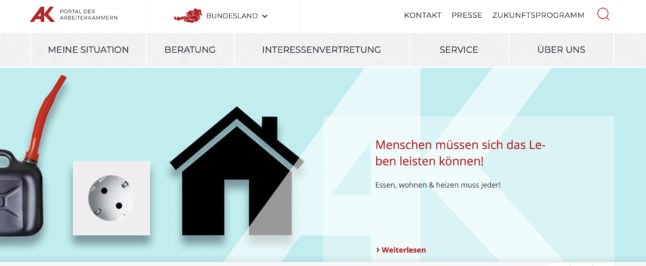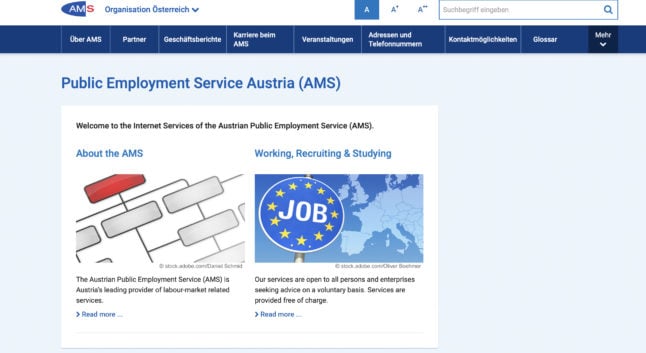Austria is certainly one of the best countries to work in, with strong labour laws that give employees access to public health insurance through their employers, a minimum five weeks of paid vacation and many rights for families.
The alpine country is also known for its high quality of living. Residents can enjoy cheap public transport, public schools and plenty of free or cheap cultural, sports and leisure options.
There are also many vacant jobs, and the country is aiming to make it easier for foreigners who have qualifications to come fill in those jobs – many in nursing and healthcare professions, but a lot in several other so-called “shortage occupations”.
READ ALSO: How Austria is making it easier for non-EU workers to get residence permits
If you are planning to work in Austria, here are a few government or government-linked websites to know.

It may not look very modern, but this website will have most of the things you’ll need if you want to move to Austria – especially coming from countries outside of the European Union.
This is where you will find the infamous “point calculator” to see if you get the minimum amount of points based on specific criteria (such as age, education, and language knowledge) to be able to apply for certain work-based residence permits.
There are also many pages explaining the different visas, permits, and many other issues with migration to Austria. The website has a very extensive and complete English version.
READ ALSO: EXPLAINED: The 2022 salary requirements for Austria’s EU Blue Card
ABA – Work in Austria is a department of the Austrian Business Agency, which operates under the Federal Ministry for Digital and Economic Affairs in Austria.
The website has plenty of information – in English – about Austria, living and working in the country, and its job market. ABA – Work in Austria also offers services, including relocation and recognition of qualifications.

Another site aimed at expats and immigrants but connected to the City of Vienna. The website is entirely in English (there is a German version, too), and most of it will have tips and services for businesses and startups settling in the Austrian capital.
However, there is also an extensive advice area for foreigners.
People moving to Vienna can also schedule in-person and free appointments to receive advice on anything from setting up a company to paying taxes.
READ ALSO: The downsides of Vienna you should be aware of before moving there

This is the Chamber of Labour website, which is an organisation that represents the interests of 3 million Austrian employees and consumers.
Even if you are not a member, it still has plenty of valuable information on Austria’s working and labour market. The website, however, is only in German.

Also, a local website, WKO is the Austrian Chamber of Commerce, and even though it is only in German, it holds a lot of information, especially on labour laws in the country.
Furthermore, it is possible to schedule a free appointment with an English-speaking representative to answer questions on employment, self-employment, and more.
READ ALSO: Which are the best companies to work for in Austria?

Public Employment Service Austria (AMS)
This is Austria’s official provider of labour-market related services. The government agency offers placement assistance and vocational counselling.
It is also the point of contact for those looking to register as employees, hire people or seek many of the benefits (including unemployment payments) that they are entitled to. It also has a job-looking platform.
Even though a part of the website is in English, most of the pages are in German only. It is also challenging to find people willing to speak English at the AMS offices.
Bonus website: The Local
Besides our news website, with pieces that will help you learn more about life in Austria and be up to date on the latest and most important information, The Local also has a job search platform where you can look for open positions which require only the English language.
Check out our jobs platform here.
Do you know any other government or government-linked websites that might be useful for people working in Austria? Let us know: [email protected].



 Please whitelist us to continue reading.
Please whitelist us to continue reading.
Member comments